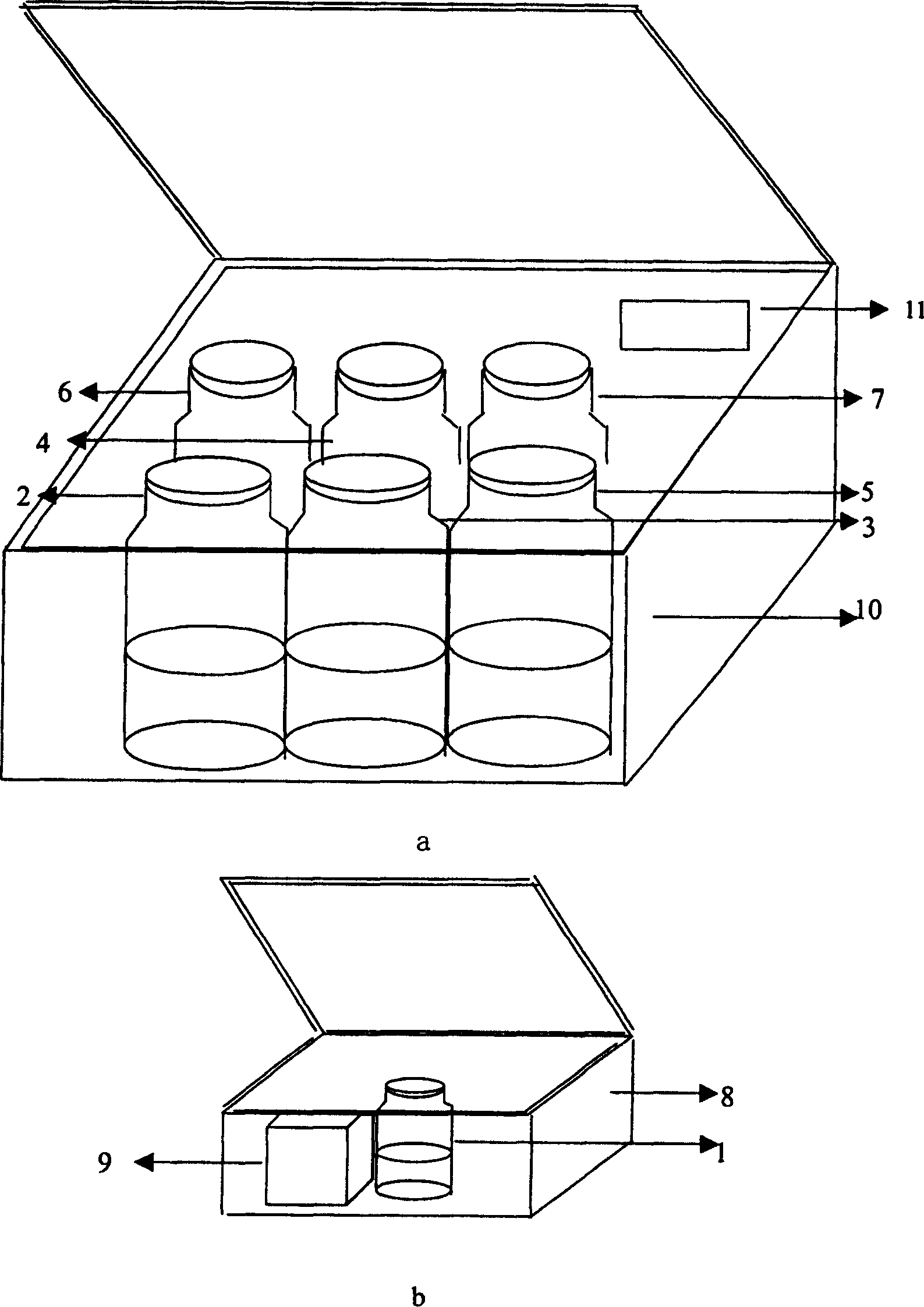Reagent box for detecting content of protein carbonyl group
A technology for detecting kits and proteins, applied in biological testing, material inspection products, etc., can solve the problems of complex sample processing, multi-use, expensive reagents, etc., and achieve the effect of simple sample processing
- Summary
- Abstract
- Description
- Claims
- Application Information
AI Technical Summary
Problems solved by technology
Method used
Image
Examples
Embodiment Construction
[0017] Below in conjunction with the composition of detection kit and accompanying drawing and method of use, the present invention is described in further detail:
[0018] The composition of the detection kit:
[0019] Reagent bottle 1: white plastic bottle, containing a solution prepared by dissolving phenylmethylsulfonyl fluoride in isopropanol. The concentration of phenylmethylsulfonyl fluoride is 20 mg / mL, and the volume is 1 mL. Dilute with reagent I before use Dilute it with liquid and use it as a homogenization medium. This is Reagent I.
[0020] Reagent bottle 2: white plastic bottle, filled with 10mmol / LHEPES, 137mmol / LNaCl, 4.6mmol / LKCl, 1.1mmol / L KH 2 PO 4 , 0.6mmol / L MgSO 4 , 0.5mg / L Aprotinin and 1.1mmol / L EDTA are prepared according to the fixed concentration of the solution, the pH value of the solution is 7.4, and the volume is 60mL. This is the reagent I dilution.
[0021] Reagent bottle 3: a white plastic bottle, containing a solution prepared by 50mol...
PUM
 Login to View More
Login to View More Abstract
Description
Claims
Application Information
 Login to View More
Login to View More - R&D
- Intellectual Property
- Life Sciences
- Materials
- Tech Scout
- Unparalleled Data Quality
- Higher Quality Content
- 60% Fewer Hallucinations
Browse by: Latest US Patents, China's latest patents, Technical Efficacy Thesaurus, Application Domain, Technology Topic, Popular Technical Reports.
© 2025 PatSnap. All rights reserved.Legal|Privacy policy|Modern Slavery Act Transparency Statement|Sitemap|About US| Contact US: help@patsnap.com


